- Well deepening stages
- Filter deepening technology
An aquifer in your personal plot is the dream of almost any homely owner. However, it is not always the case that the well, which even last year pleased the owner with its water reserves, does so in the current year. Many factors affect the quality of the water and the water column in wells. In some cases, it is quite possible to do with the usual preventive cleaning. In the case of the influence of hydrogeological processes, it may be necessary to deepen the well. if you have certain skills, you can do it yourself.
So, it is advisable to resort to the process of digging a well to a great depth in cases where:
- there is no way to dig a new well;
- the depth of the well column is more than 10 rings;
- the well dries up;
- the filling capacity of the well decreased to less than 1 ring per day.
In other cases, it will be more expedient not to deepen the well, but to dig a new well.
Preparation for deepening the well
Digging a well to a great depth is necessary if the water level has dropped and it is not enough, or the well is completely dry.

Water can drain from the well for several reasons. First of all, this is the digging of a well during the period of high standing of the inputs, the close location of artesian wells that drain water, long-term drought. It is important to make sure the problem is not temporary. If there is no water for a long enough time, the well will have to be deepened.
It is possible to deepen the well qualitatively and correctly with your own hands, however, if you doubt your abilities, it is better to entrust this work professionals, since the deepening of the wells can only be performed once. Qualified specialists will assess the condition of the well, the ability to hold the rings with soil, and a number of other factors, on the basis of which it will become clear whether it is possible to deepen the well. After that, the well is deepened to the maximum possible depth. As a rule, it is at least 3 m. Without performing the necessary calculations, deepening wells, as a rule, turns out to be a completely useless waste of money and time. And in this case, it doesn't matter whether the well was deepened by professionals or by hand.
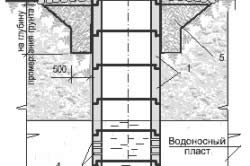
Without calculations, there will be no guarantee that the well will provide an inflow of the required volume of water per day.In some cases, it is impossible to do the deepening with your own hands due to technical reasons or inappropriate high cost of work. If the water is in the well good quality and the deepening is preferable to the device of a new one, you need to evaluate the technical feasibility. So, you can do the deepening of wells with your own hands if the well shaft consists of no more than 15 iron concrete ringsnot offset from each other. If the displacement is insignificant, then it is possible to resort to leveling the columns.
Before starting work, it is necessary to install brackets on all seams of the already existing standpipe. This is necessary to exclude the possibility of its rupture. Make sure that there is no water-lifting equipment in the structure or dismantle it. Remove the house above the well.
Back to the table of contents
The ability to deepen the well with your own hands
With your own hands, you can make a deepening of almost any well by installing several additional rings with a smaller diameter, provided that the column does not have obvious curvatures and displacements of the trunk. Do-it-yourself deepening of the wells begins with the installation of brackets on the lower seams, which prevents the rings from sinking onto the trunk with a smaller diameter. After that, it is necessary to dig the trunk inside the column for 2-3 rings. Upon completion of these works, rings of a smaller diameter are installed in the dug hole, which are also fastened with staples.
Brackets must be installed at the place where the 2 columns join so that the main column does not fall onto the repair shaft in case of soil subsidence. In the end, river pebbles are poured onto the bottom, which will serve as a filter element. Next, all seams are sealed.
To deepen the wells with your own hands, you will need the following tools and materials:
- pump for pumping water;
- shovel with a short handle;
- several buckets of different sizes;
- a winch capable of withstanding a load of up to 600 kg;
- device for lifting soil;
- bump stop;
- rope-ladder;
- devices for lighting the place of work.
Back to the table of contents
Deepening wells with repair rings

Most effective method do-it-yourself wells deepening - building up the well column from the bottom using repair rings of a smaller diameter. If the main shaft is made of standard rings with a diameter of 1 m, then rings with an inner diameter of 70 cm are used as repair ones.
The diameter of the rings, lowered down in the process of deepening the mine, should not exceed the diameter of the previously installed structures. Rings of a smaller diameter (80 cm) are used if the well shaft is straight along its entire length. The height of rings of this diameter can be 90 or 100 cm.
If the rings are skewed in the well shaft, then products of even smaller diameter (70 cm) are used for deepening. This significantly increases the gap between the new and previously installed rings. The gap can be closed by laying natural stone or pebbles.
Attempts to build up the column by lowering it by digging in the lower ring and building up the well column from above very often lead to poor results. Over time, the well column hangs quite firmly in the tunnel, and it will be quite difficult to move it entirely.
By deepening with your own hands using repair rings, you can return the water level to its original state. Such works are of a one-time nature, so they need to be performed at the highest possible level, despite the high labor intensity of the process.
Back to the table of contents
Well deepening stages
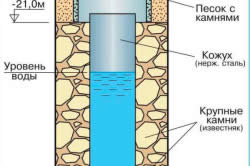
Do-it-yourself wells deepening is carried out in several stages. First, the repair rings are checked for external protrusions that could interfere with the lowering of the ring. The column is scraped using metal plates 4x40x300 mm. For each seam, you need 3-4 such plates. They are attached to the column walls with 12 mm anchor bolts with different drilling steps. This operation makes it possible to ensure the continuity of the string in the event of movement of the supporting layer in the process of deepening.
After fastening the column, a bottom filter is selected and digging under the repair shaft begins until the walls of the new tunnel begin to collapse. The next stage is the descent and scraping of the repair rings. After that, the digging process continues with building up the column from above. As an additional load, to ensure better sliding of the repair column downward, additional repair rings can be used, which are removed from the shaft at the end of the work. The old column and the refurbishment column are connected with angle brackets. This measure will prevent the old column from sliding onto the repair one.
The final stage of deepening the well is filling the bottom filter and sealing the joints with mortar.
The best time for these works is late autumn or winter. This period is the lowest, which makes it possible to install an additional well column at the maximum depth.
Back to the table of contents
Features of deepening wells in floating soils

Special precautions must be taken when working in floating ground. It is almost impossible to overcome quicksand by handicraft methods (buckets and a hand pile driver), therefore it is better not to undertake such work in the absence of effective auxiliary mechanisms, because reach desired results will still fail.
As practice shows, it is possible to overcome a difficult section of soil only by rapid penetration of 3-4 repair rings using an additional section of rings for additional load. The technology for carrying out work on deepening is the same: it is imperative to scrape the repair and the main column, only for drilling in this case, special equipment is used, which makes it possible to extract a large volume of sand from the well shaft at a time, which significantly increases the rate of upsetting the repair column.
The only factor that affects the effectiveness of such a penetration is the hit of the repair string on the boundary of quicksand with hard rock. The possibility of such a combination of circumstances is extremely small, but it is nevertheless present. In this case, the sinking is stopped, a hardwood raft is laid on the bottom and a filter is poured. As a result, the water inflow will be greater than before the repair work.
Using a similar technology, the wells are deepened with their own hands and in the case of clay quicksands.
In some cases, well owners are faced with such a nuisance as a significant decrease in its water level or even complete drying out. In order to be able to continuously operate this source of water supply in the future, it must be deepened. True, this procedure is quite laborious, but quite feasible, and further we will consider in detail how to deepen the well on our own.
When should the wells be deepened
If you are faced with a similar problem - the water in the well disappeared, then you need to ask the neighbors how things are with their water. If the same picture is observed in neighboring areas, then, most likely, the reason for this was drought or frost. It is possible that water will appear again soon.
If water does not appear for a long time, then deepening is indispensable. In addition, this operation may be required if the source is installed on quicksand as a result of which it is constantly covered with sand. In this case, it should be deepened to the next aquifer ().
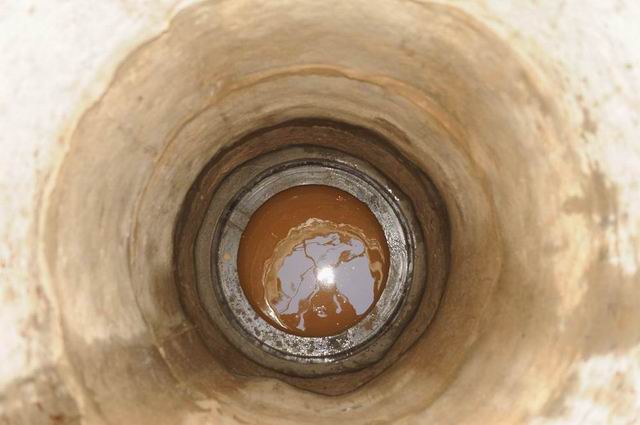
It should be said right away that it is technically and economically expedient to deepen the well in the country in the following cases:
- The source is completely dry, or the water rises no higher than one ring per day.
- Column depth is more than 10 rings.
- The structure is in good condition and the water produced is of good quality.
- There is no way to equip a new source of water supply on the site.
- In the structure, the rings were not displaced by more than 4 cm and the column was not bent.
Therefore, first of all, it is necessary to inspect the structure, determine its condition and then decide whether it is possible to deepen the well. Better yet, invite experienced master, which will give its assessment. The fact is that in some cases it is cheaper and easier to rebuild the water supply than to restore the old one.
Note! In case of excessive soil pick-up, the rings can settle and overlap the aquifer. In this case, the structure cannot be restored, there is only one way out - to make a new source of water production. In addition, you can stumble upon quicksand, which can harm not only the column, but all nearby buildings.
But, suppose that the structure was in good condition, with an even column and there are no complaints about water either. So you can start deepening, which will allow you to return the water to its previous level. However, immediately get ready for the fact that this process will take a lot of time.

Deepening methods
There are several ways to perform this operation:
- With help plastic pipes (filter cavity).
- You can also deepen the well with smaller rings.
- With smaller casing rings.
The deepening should be carried out to the maximum possible depth for the soil, which depends on several factors, such as:
- The ability of the soil to hold the walls of the column;
- Aquifer depth;
- Soil density;
- Water inflow.
Preparatory work
Before deepening the old well, it is necessary to complete the preparatory work:
- First of all, you need to install brackets between all the seams of the rings in order to prevent rupture of the well column during the process of making the recess.
- After that, it is necessary to dismantle the ground part of the structure (house). If there is water lifting equipment, then it must also be dismantled.
After all these operations, you can proceed directly to deepening.
Filter method
This method involves using a plastic or metal pipe.
The instruction looks like this:
- First of all, you need to prepare a pipe with a diameter of 50 centimeters and make holes in it.
- Then the pipe is tightened with a stainless steel mesh and thus a homemade filter is obtained. You can, of course, purchase ready product, made by specialists, but its price will be much higher.
- Next, the pipe should be lowered to the bottom.
- After that, the soil is removed from the pipe using a thief, which allows it to deepen to the required level.
In fact, this method is represented inside the structure. You can do the bailer yourself.
This tool has simple design - an ordinary pipe with a check valve. Baking powder should be located at the bottom of the thief.
The principle of the tool is as follows:
- The shell is thrown to the bottom of the pipe.
- Then it is extracted to the surface together with the soil.
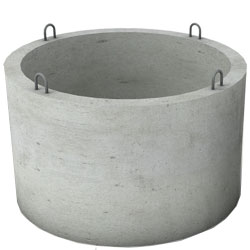
Digging method
This option of deepening consists of several stages of work:
- First of all, it is necessary to pump out all the available water from the bottom of the well.
- Then you need to go down to the bottom and dig in the soil with your own hands using an ordinary shovel, while the selected sand must be transported upward.
- Gradually, the lower rings settle down, and at the top there is a place for installing new casing elements of the same diameter. This process is quite long and requires careful execution of work, since it is extremely important to deepen the well correctly, otherwise you can forget about the possibility of using it.
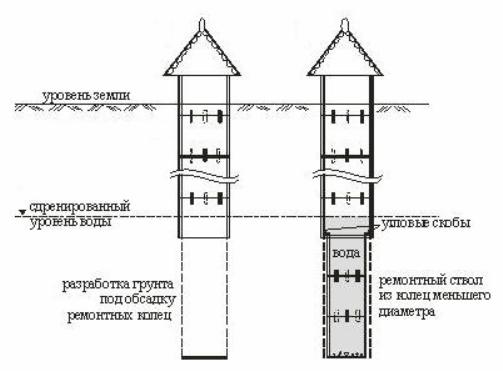
Deepening with casing rings
With this method, as in the previous case, it is necessary to go down to the bottom and select the soil, however, the main rings are not undermined, and the soil is strengthened with rings of a smaller diameter. The lower casing, in this case, must necessarily overlap the upper one.
In all cases, as mentioned above, it is necessary to deepen the bottom to the maximum permissible depth, so as not to return to this issue.
Advice! If the soil is dense, then the deepening is made with an open hole, that is, without casing, and the rings are installed after the end of the work.
Conclusion
Despite the complexity of the process, it is quite possible on your own. Considering all the responsibility of the event, it is best to use the filter method, as it is the safest.
For more information on this topic, see the video in this article.
The price of deepening is from 6,000 rubles.
- Well depth up to 10 rings
- Soil at the bottom without difficulty
- Free access to the well
what affects the cost
- Well depth
- Type of soil in the well
- Number of groove rings
- Dismantling work
- Additional services
The price of deepening is from 6,000 rubles.
- Well depth up to 10 rings
- Soil at the bottom without difficulty
- Free access to the well
what affects the cost
- Well depth
- Type of soil in the well
- Number of groove rings
- Dismantling work
- Additional services
WHEN DO YOU NEED TO DEEPEN THE WELL?
no water in the well
Very often the water in the well disappears due to the fact that nearby, in the vein of the horizon, which fed your well, a neighbor dug a deeper well and takes a large amount of water. Also, drilling near a well, can affect the well, but in this case, the water can return to the well after a month.
water in the well fills up very slowly and its level has decreased
A decrease in water inflow and water level in the well can be caused by climatic factors and be short-lived. Also, it can happen due to the increase in the number of wells and wells in the district. Large water withdrawals from the horizon and dry season negatively affect the water level.
We are sure that cleaning the well will not help
Sometimes people who do not really know the state of their well think about deepening. Quite often, after a specialist inspect the well, carry out cleaning of the bottom from the accumulated silt and cover up the cracked seams. If, after cleaning and repairing the well, the water inflow and the water level have returned to an acceptable level, the well is not deepened. From this it follows that the problem was due to the rupture of the seams, through which a fine suspension of sand and clay entered the well, which subsequently blocked the natural flow of water into the well, reducing the total water level.
HOW DOES THE WELL DEEPENING?
Before the deepening itself, it is necessary to carry out the following work:
1. Dismantle the house, pumping equipment
2. Pump out all the water
3. Make a detailed inspection of the well from the inside
4. Fasten the well with staples (to avoid rupture and displacement)
Well deepening process
Deepening the well
When the well is in dense soil, the deepening is made without repair rings, the rings are lowered at the end of the digging. If the soil does not allow digging without rings, then excavation is carried out in the lowered repair rings. The well is deepened until the water inflow has returned to normal and the water level has risen.
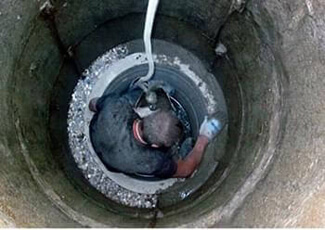
Next, the seams on the main rings are covered up. The process of deepening the well is complete.On a note:

Puttying joints in repair rings
The next step will be sprinkling with fine gravel or grouting the gap between the repair ring and the standard ring, as well as sealing the joints.
Part of the repair ring, 30-50 cm, is installed above the bottom of the old well, to block the flow of soil into the deepened well.
On a note:
Excavation in rings of a smaller diameter is an order of magnitude more difficult than in standard ones, therefore the cost of work is higher.
Quite often, deepening small wells is not a profitable business, it is cheaper and better to dig a new well, and fill up the old one.
WELL DEEPENING RINGS
To deepen the well, rings of a smaller diameter are used, with the same properties as large ones. 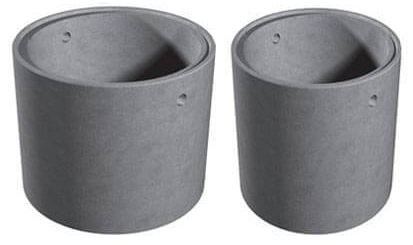
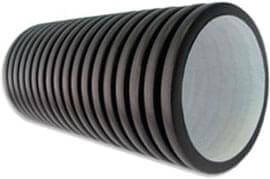
PLASTIC PIPE FOR DEEPENING THE WELL
In cases where the well shaft has ledges, and repair rings made of concrete will not work, you can use a corrugated pipe made of low pressure polyethylene with a smaller diameter - 600 mm. Its cost is, of course, more, but without it it happens to deepen the well, it will not work. Its advantages are durability, tightness, environmental friendliness.
The cost of the pipe itself for 1 linear meter is from 5000 rubles.
It is not easy to deepen the well, but it is necessary
It is not necessary to deepen the well so often, but sometimes it is extremely necessary. Is it possible to deepen the well, and how to deepen the well correctly, will be discussed in this article.
Also, the video in this article will allow you to see in detail the entire process of doing the work. Step by step instructions will also be offered.
Completing of the work
First you need to think about how much it costs to deepen the well. Sometimes this work will be much more expensive from making a new one.
Therefore, before starting work, it is worth carefully calculating everything. If it is not possible to dig another one, then we will proceed directly to the question of how to deepen the old well.
Equipment required
It is possible to deepen the well in the country only with the use of certain equipment and it should be prepared in advance:
- You will need a pump to pump out the water. Only here you need a rather powerful one, if there is no such thing then you can use two;
- You will also need a shovel, only a short handle must be in it, otherwise you will not be able to work inside;
- Prepare buckets, not just one, but several;
Note: You will need to lift the buckets. Do not hope that you will do it manually. Prepare a winch and a reliable block for lifting a load of about 600 kg.
- You will also need a rope ladder;
- You should also prepare a bump stop and lighting supply.
- To produce, you will need special clothing that does not get wet, rubber boots with high tops, a helmet that will protect your head from bumps. After all, a well with water and this is worth remembering
Well preparation
We start work in the following order:
- First you need to dismantle the well house, since in the future you will need convenient access to the well.
- Then you should pump out the water. You can simplify this task if you have a submersible pump. Otherwise, you will have to pump out the water manually using buckets.
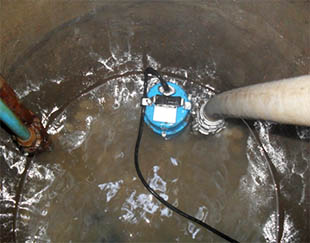
Attention: It is important to reinforce the seams between the rings. For this purpose, their reinforcement is carried out. It is advisable to fasten at least two metal plates to the seam; this can be done using anchor bolts.
If you suspect that there is a possibility of falling into the well on a floater (silt with fine sand), then you should definitely strengthen all the seams with this method.
- Pay particular attention to such seams (see), which are located between the rings, at the closest distance to the surface. Since in winter, due to their shift, a drifter can get into the well.
Now start clearing the bottom of soil, silt, debris. This should be done in all cases using a shovel and a bucket.
Deepening a well with a filter
During the deepening of the well using filtration, a special pipe is used:
- It can be plastic or metal, its diameter should be about 50 cm, length about one meter.
- It is necessary to make holes in the pipe, the diameter of which should be no more than 1.5-2 cm, then they should be tightened with a stainless steel mesh. As a result, you will get a DIY filter, we lower it to the bottom.
- It is necessary to extract the sand from the pipe using a bailer, this will make it possible to deepen the well to the proper level.
Deepening a well using digging
You can deepen the well with rings of smaller diameter. Thus, you can get to the next aquifer.
As mentioned earlier, before you start digging for the installation of the trunk for repair, you need to dock the rings of concrete using special plates.
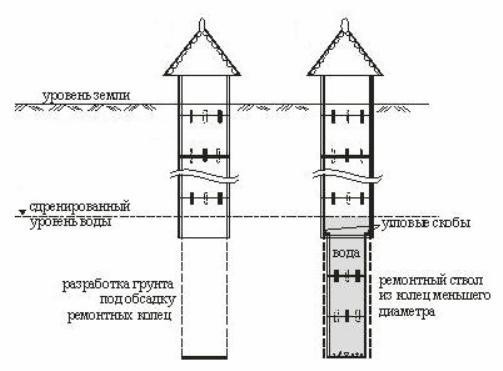
So:
- Digging until the walls of the mine begin to crumble.
- Then you should lower and start scraping the rings for repair.
- Digging can then be resumed as the shaft is extended further from the outside.
Attention: In order for the sliding of the concrete rings to be stable downward, you can use additional rings for repairs, but when the work is completed, they must be removed without fail.
- At the end of the work, you should connect the repair and the old columns, using angle brackets for this. Then the old shaft will not slide into the new well shaft.
- At the final stage, it is necessary to update the bottom filter. This can be done by covering it with gravel and gravel.
Deepening a well in floating ground
If it is placed on quicksand, then everyone should be very careful.
Attention: The quicksand is quite difficult to overcome by hand digging with the help of a winch and a bucket. It is better not to take on this work if you cannot use the help of effective mechanisms, since you will not be able to achieve a positive result.
So:
- Experience has shown that the most challenging soil zones can be overcome by using rapid penetration with four repair rings to increase the load. The main and additional repair shafts must be scraped.
But, for this you need special equipment, which makes it possible to unload a lot of sand from the well shaft in one pass. This will greatly increase the rate of settlement of the new fragment. - The efficiency of rapid penetration is influenced by the penetration of a new part of the well into the zone of a floater with hard soil. In the event that this happens, you will have to stop driving.
It is necessary to put the prepared larch raft on the bottom, then pour the filter material. The inflow of water will increase in comparison with the previous state, before the repair.
Final cleaning of the well
Having finished the work on deepening the well shaft, the final one should be made.
So:
- The walls inside the mine are treated with a disinfectant, for example, sodium hypochlorite.
- You can apply this chemical solution to the walls using a specially designed high pressure washer - Karcher. This will clean the surface of organic deposits.
- Then proceed to seal the seams, potholes and cracks. It is necessary to prepare a liquid glass solution and a cement mortar. Waterproofing if necessary.
Attention: Before starting cleaning, a water analysis should be done. In the event that the water is hazardous to health, it must be disinfected. To do this, pour 500 grams of bleach into the well shaft. After half an hour, pump the water again.
If the well is dirty due to a cesspool or garbage pit located at a close distance, then it is necessary to move them further away and make reliable sealed concrete walls for them.
So:
- In the event that sewage has penetrated into the mine, they will remain in it for a certain time, so the water will not be suitable for use. Also, to improve the quality of the well water, you should put a filter on the central pipe that goes to the house.
- At the end of the work, place coarse gravel at the bottom of the well shaft, which should be at least 15 cm, this will help strengthen the soil and reduce water pollution.
Before starting work, think carefully about everything and look at the photo. After all, the price of work is high-quality water and this should be taken seriously.
Each owner of a private house or summer cottage faced such a problem as an insufficient amount of water in the well and a deterioration in its quality. Sometimes digging a new well is impossible, and in this case it is advisable to try to deepen the well and thus revive it. How to do this, using what methods, we will consider in this article.
We deepen the well with our own hands
Every land owner dreams of a well with enough drinking water of good quality. Sometimes the quality of the water changes at one moment and the reason for this can be drying out or disruption in the flow of water. When a decision is made to deepen the well, you should weigh your strengths and decide:
- look for a team of specialists;
- carry out the procedure yourself.
If you are leaning towards the second option, you need to know and take into account many nuances. One of the most important requirements is that work should be carried out during a period of calm groundwater. This period begins from the last month of autumn and lasts until the middle of winter.
There are two main methods of deepening:
- filtration;
- use of repair rings;
- digging in (digging).
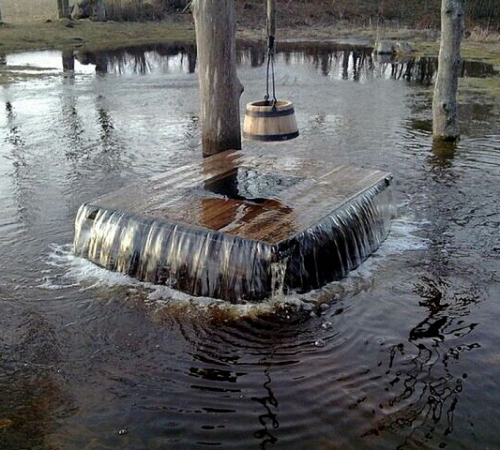
When and why to deepen the well
You can deepen it with your own hands, without looking for special teams. If you are sure you can do it yourself, you can start. The well deepening procedure can be carried out only once. The main points to pay attention to before starting the procedure:
- the condition of the well;
- depth of groundwater;
- the ability to hold the rings with soil.
The maximum possible deepening is about three meters deep.
In such cases, it is necessary to deepen the well:
- there is no way to dig a new well;
- the depth of the well with columns is more than eleven rings;
- the water dries up noticeably;
- the well is bent;
- very high taste qualities of water;
- the filling capacity of the well has significantly decreased.
If the reason is not temporary, deepening should be considered. If the reason is different, it is more expedient to dig a new well.
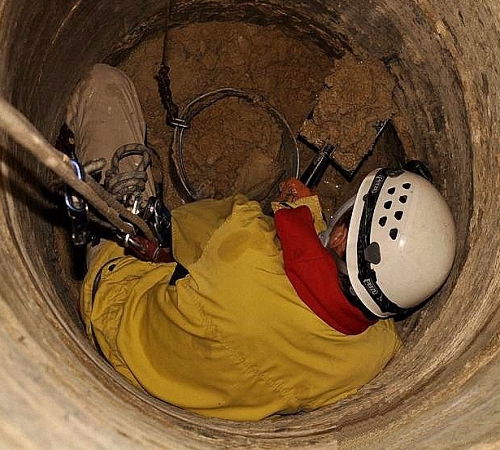
Preparation for deepening the well
There are several reasons why the water level drops:
- the weather is very hot with no rain;
- closely located artesian well.
Before deepening the well, the condition of the well should be analyzed, the ability of the soil to hold rings and the level of groundwater should be determined. When all the objective reasons have been analyzed, you can proceed to deepening the well. If you do not assess the condition of the well, then all the time and physical costs will be useless. It should be borne in mind that the procedure for deepening a well can cost more than digging a new well.
To deepen, you will need the following equipment, which must be prepared and tested in advance. Such items are required for deepening:
- powerful pump, it is better to prepare two pumps;
- shovel with a short handle;
- three - four buckets;
- a winch capable of lifting about five hundred kilograms;
- lifting block;
- rope-ladder;
- jackhammer;
- lighting, preferably a hat with an LED light bulb, this will help keep your hands free;
- rubber shoes and boots, helmet for head protection.

To carry out the deepening procedure, you must act in the following order:
- remove the top of the well, the above-ground part - this will give the possibility of free access to the well;
- pump out all the water - you will need powerful pumps, a deep pump will help you do this faster than pumping water out in buckets manually;
- it is necessary to strengthen the seams in the well, it is possible that silt and sand gets through them;
- you need to clean the bottom, use a shovel and buckets for this.
It is permissible to carry out deepening if the length of the well is not more than sixteen concrete rings and if the displacement between them is insignificant. Before starting work, the edges of the column are stapled with staples to prevent rupture.
The deepening work is quite laborious and dangerous. It is better not to engage in this work without special knowledge and experience. When deciding to do everything yourself without involving specialists, you should theoretically study the rules, stages of work and safety precautions.

Deepening the well using the digging method
To deepen the well using the digging method, you should prepare the necessary clothing, tools, materials. It is necessary to carry out work in a company of three to four people. The procedure requires the insurance of the person who will work inside the mine. Working alone is extremely dangerous.
After dismantling the above-ground part of the well, it is necessary to strengthen the inter-concrete joints with staples. This can be done with bolts and plates, as well as brackets and fittings. It is advisable to do this at all times, but especially when a floater is threatened. The driftwood falls into the mine due to the displacement of the rings.
The deepening algorithm can be described as follows:
- pump out or manually scoop out water from the well;
- carefully fixing the rope ladder, lower it into the well shaft;
- a person is fixed with a safety cable and only after that he sinks to the bottom;
- dig under the first ring,
- with the help of a winch, the earth rises up;
- under the weight of the structure of the upper concrete rings, subsidence occurs, it becomes possible to install new rings.
The digging process is quite dangerous and requires accuracy, well-coordinated team actions and correct actions.
- going deep inside, springs are discovered that will become a source of water in a new, repaired well;
- at the end of the work, a bottom filter of crushed stone, gravel is installed.
If the depth of the mine is more than ten meters, it is better to invite specialists - the work can be dangerous for a non-professional.
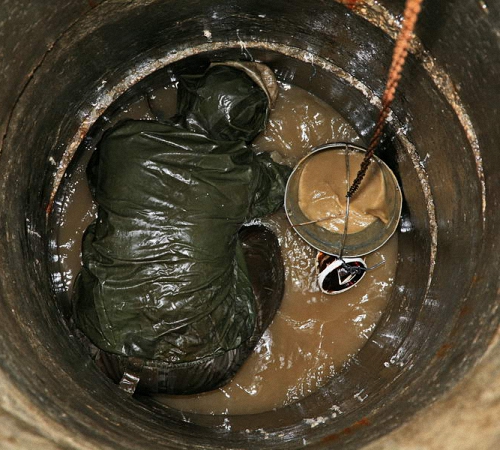
Deepening using rings
The method of deepening the well using rings of a smaller diameter is considered very effective. Having performed the same manipulations to remove water and restore the integrity of the rings, it is necessary to use rings of a smaller diameter. They are dug into the mine, gradually deepening. The gap between the main rings and the repair rings can be closed with stones and covered with smaller pebbles.
The algorithm for digging a well is as follows:
- the bottom filter, the top soil layer is removed;
- start to dig a tunnel for a new ring;
- for weight, supplement with another ring, which is removed later;
- after installing a new ring, it must be attached to the main one; for this, staples are used;
- at the end of the installation, the seams are sealed with a special solution and the bottom of the well is filled with a new bottom filter: pebbles, stones, gravel.
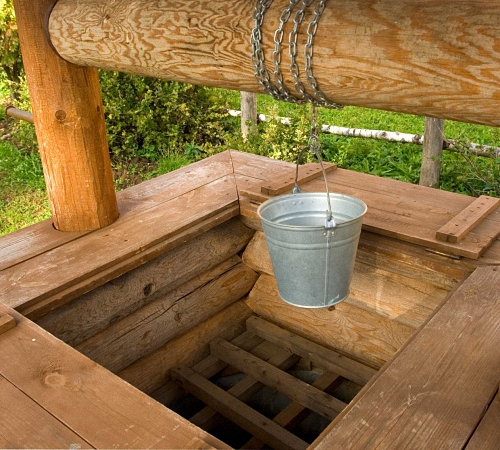
Filter cavity
Sometimes this method gives the best results. To deepen the well with a filter, a pipe about a meter long and more than fifty centimeters in diameter is required. They are covered with a stainless steel mesh and driven into the bottom of the well and try to plant this filter deeper.
Cleaning the well after deepening
After the completion of the deepening, the well should be cleaned and disinfected. To do this, perform the following manipulations:
- Sodium hypochlorite is used especially for drinking water supply. He should process the walls of the well. Treatment with a pressure washer (Karcher) is recommended.
- All mechanical damage, chips, cracks must be repaired with waterproofing, liquid glass, cement mortar.
- A thick layer of rubble or gravel at the bottom of the well will act as a bottom filter and help anchor the soil.
Bottom filter, when, how and why
The bottom filter will help to make the water clean, clear and tastier. It will also help water flow and strengthen the soil. There is no need to install a filter in every well, when installing a filter for no reason, the opposite effect may appear: the amount of water will decrease, the quality will deteriorate. First you need to find out the quality of the bottom of the well, it happens:
- dense, made of clay;
- loose, made of clay;
- sandy;
- muddy, quicksand.
If the bottom of the well is dense clay, water, seeping through the soil, is filtered with high quality. In this case, a bottom filter is not needed, and its installation will make it difficult for water to flow.
Loose clay bottom does not require a filter either. It is advisable to simply fill the bottom with large rubble.
Sandy bottom is a bottom option that requires the installation of a bottom filter. With any movement, sand easily rises from the bottom and falls into a bucket or pump. The water quality is not high. There is a need for a bottom filter in several levels.
Quicksand - muddy mixture of sand, water and clay element. The most difficult case, a bottom filter is necessary, but it can only help for a while. Without a complex engineering structure with a metal mesh and shields, the bottom filter will eventually sink down and be absorbed by the floater.
There are several types of bottom filter:
- triple backfill, large crushed stone, pebbles alternate so large fractions on the bottom, finer on top, small elements are stacked on top;
- triple backfill, the smallest elements are on the bottom, slightly larger on top, everything is covered with the largest fragments of gravel or crushed stone.

And if quicksand?
When manipulating the deepening of the well, you can face such a difficult situation as a floater. In the ground, a mixture of sand, silt, clay and water, being in a confined space, poses a great threat when entering this space. The floater moves - a rapidly and unexpectedly large mass of water under high pressure enters the well shaft. The size of the floater ranges from two to nine meters. There are cases when, while working in a well, a worker stumbled upon a floating fish and died.
If a floater occurs, it is advisable to abandon the restoration of the well. If this is not possible, you must wait until the period of severe frosts and try to deepen the well.
Sometimes the floater is so insignificant that it does not affect the deepening process in any way and you can continue to carry out actions further. Continuing digging and placing the rings, an aquifer will appear.
Sometimes the situation develops so that the rings do not fall, although the digging continues and a large amount of earth rises. Stop working and leave the mine, most likely the following may happen:
- the movement of reinforced concrete rings will begin, and they will move to the side;
- there is a vertical deformation of the rings;
- voids appear on the outside of the well;
- an extremely dangerous situation threatens human life and health.

Problem situations when lowering rings
When deepening, situations occur when the rings do not fall. In this case, you can try the following methods:
- Drilling along the entire circumference of the upper ring - a drill about one meter long and nozzles for it are required. Due to the ability not to deform or fly off, the drill is built up with a thick-walled pipe. After the entire area around the upper ring has been processed, you should tamp this place, try to settle the ring by exerting weight on it. You can use the services of a truck crane.
- The next method is to use aspen planks. To beat off the circumference of the well with these boards, and their length must correspond to the depth of the well.
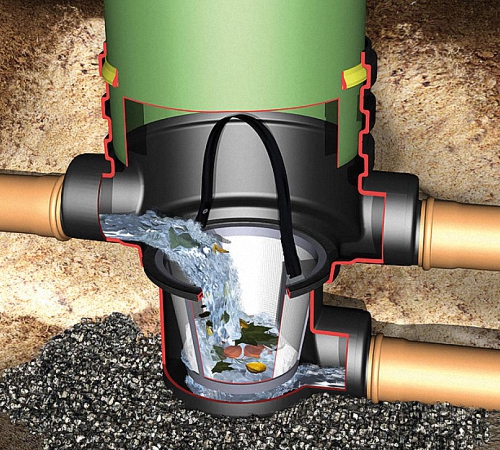
Seam sealing methods
When replacing rings or just for repairs, you have to close up the seams through which water and sludge seep. The seams must be covered carefully and efficiently so that there are no problems with the tightness of the well. Reasons for depressurization:
- an ordinary solution deteriorates over time under the influence of water and temperature extremes;
- the ground is "moving";
- the upper rings may mix under the influence of low temperatures;
- violation of construction technology.
This becomes the reason not only for the destruction of the joints, but also for cracks in the rings themselves. Sand, silt, dirty water penetrate into the well, the water quality decreases. In order to avoid such a situation, it is necessary to qualitatively seal the joints. The technology for sealing dry and wet joints is fundamentally different.
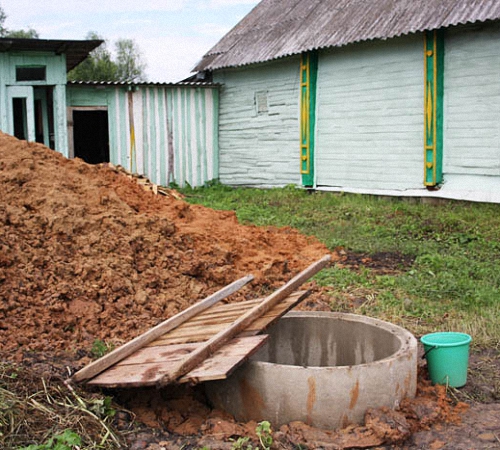
Before work, you must perform the following actions:
- treat the walls of the well, clean it from dirt, silt with water pressure and lips;
- remove crumbling cement, clean it that staggers and does not hold;
- expand the seams;
- check that the rings are not skewed relative to each other;
- connect them with staples.
Dry joints can be sealed with cement mortar, but under the influence of high or low temperatures, it can collapse. To prevent destruction, liquid glass should be added.
Carrying out the deepening of the well at home requires compliance with safety measures and knowledge of the algorithm for carrying out this process.




